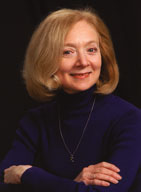Rethinking notions of beauty and aging
Published August 3, 2011
If there was one thing I could change about my face, I’d get rid of the frown lines between my eyebrows. I know I’m not alone in this targeted hostility towards those lines. In fact, one of my colleagues who’s young enough to be my daughter and has beautiful, smooth skin, complains about the same frown lines and constantly fusses with her bangs to cover the spot.
I’ve probably had those forehead grooves since I was her age because I’ve been fantasizing for many years about a Barbie-sized iron that could be used to smooth them out. I described this image to my dermatologist during a recent checkup. “I have a better idea,” she said. “Have you thought about Botox?”
I have to admit that I had, but with reservations on several levels. Botox, introduced in 2002, was the first botulinum toxin (which can cause Botulism poisoning) approved by the FDA to temporarily treat those pesky frown lines. My dermatologist assured me that there are rarely side affects, but if you Google Botox you’ll see that it’s possible for the toxin to spread from the area of injection and cause symptoms of botulism, including severe or life threatening difficulty breathing or swallowing.
ADVERTISEMENT
OK, so maybe that’s pretty unusual, but it still doesn’t sound very inviting.
On an even deeper level, I’ve always had a reluctance to mess around with what God has given me. That’s why it took me years to color my hair. Of course, that changed as soon as the Brillo pad gray started taking over my natural blonde. After all, putting color on my roots didn’t seem that invasive. And it wasn’t like I wanted flaming red hair, well, maybe I did a little, but mostly, I just wanted to look like me.
So I debated with myself about the difference between getting blonde highlights and injecting Botox into my skin. Maybe I’d get over the latter too. As I vacillated, I read a piece by Rabbi Hyim Shafner of Bais Abraham Congregation published in the July 9th St. Louis Post-Dispatch that provided an answer. The commentary, entitled “Framing physical beauty in a new light,” discusses a blog by a woman who had been abused as a child. Rabbi Shafner said the blog contained some of the deepest spiritual insights he had read.
He cited one post, entitled “Does your grandmother look good naked?” in which the author discusses the beauty of her 82-year-old grandmother versus the way today’s society defines female beauty.
ADVERTISEMENT
“Her body was beautiful because she lived in it,” the blogger wrote. “When we separate a body from its spirit, we turn that body into a corpse.”
Rabbi Shafner said he believed that the author is talking about an entirely new way of seeing physical beauty, sexuality and attraction.
“To see ourselves and others as beautiful, as sexy, but not because our skin is taut, not because we are an ideal figures, but as the ‘us’ that inhabits our bodies.”
He wrote of the Bible’s description of the first Jewish woman, Sarah, who at 66 years old is described as “physically, not spiritually beautiful” and how Abraham feared that Pharaoh would be attracted to her.
“Is it possible that the blogger is right?” Rabbi Shafner wrote. “That were we not inundated with media indoctrinating us to believe that beauty is only a manifestation of certain kinds of skin, certain weights, certain breast and leg formations, that beauty would be a wholly different type of experience for us?”
It made me think about those lines in my forehead. What if there were no magazine ads for Estee Lauder Perfectionist wrinkle lifting serum or tempting coupons for Oil of Olay Regenerist cream? Would those lines still bother me? What if they were simply a part of the fabric that makes me who I am?
The bottom line: I didn’t make an appointment for the Botox. Better I should spend time trying to improve what’s inside of me rather than poisoning the packaging.
Dor to Dor
Gail Appleson is a writer for Armstrong Teasdale LLP and freelancer who lives in St. Louis.
“Dor to Dor,” is an intermittent Jewish Light series looking at various aspects of “grown-up” life and generational connections through the lens of Jewish writers living in the St. Louis area. If you are interested in contributing to Dor to Dor, please email [email protected].
















